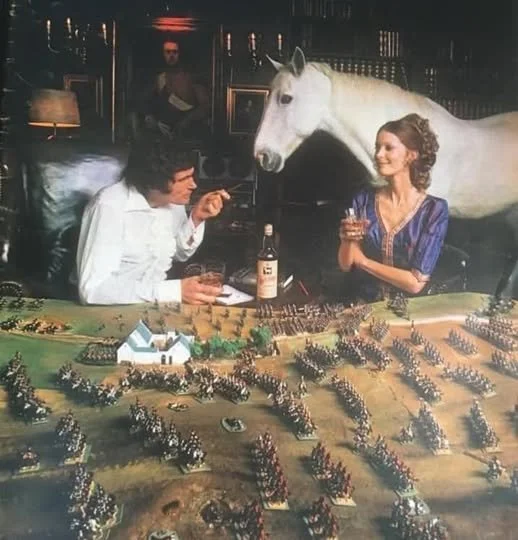TTS AAR: Ewelme 25 Game 2: Venice Abroad vs Ikko-Ikki
/My second game at this year’s Ewelme tournament was against Colin’s Ikkio-Ikki: a nasty bunch of Japanese samurai monks who all happened to be (a) fanatic and (b) carry big choppers i.e. hard to kill and lethal in combat!
As expected, as the battle began, the Ikko-Ikki eschewed any tactics and just headed straight for my battle line intending to use their naginatas to deadly effect.
My plan was to weight everything away from the left flank, aiming to defeat half their army with two-thirds of mine on the frest of the table, and then turn back to defeat the second half in due course. The knights would punch through their line on the far left and far right of my line whilst my over-matched infantry just held on until the knights could turn and hit the Ikko-Ikki in the rear.
On the left flank, the Later Knights did their jobs very nicely, but the helmet-heads didn’t: the usual cardboard Venetian armour coming into play.
This effectively left my left flank wide open apart from some nervous looking light infantry, meaning that I really needed to win on the right as soon as possible, or see my super-expensive camps fall to the religeous nutters costing me a lot of coins!
Meanwhile, in the centre, my infantry were hanging on for dear life: only really surviving because I had one extra unit that could help hold the left part of the line…but the Ikko-Ikki were remorseless in attack, and soon the centre began to look very shaky indeed.
It was all down to the knights on the right, helped by the victorious later knights on the left.
They had indeed punched through the enemy line, and were now looking at how best to finish the game before the left and centre finally gave way.
Everything now worked out rather nicely.
The later knights that had been successful on the left swept into the centre and smashed some of the Ikko-Ikki cavalry reserve that had been coming forward to plug the gap, from the field.
This allowed the knights of the right to position themselves perfectly to turn the tide of the battle my way: one unit headed for the flank of the Ikko-Ikki line that was threatening my infantry, the other spotted a chance to make a sudden thrust forward and take the enemy camp, not undefended but currently unoccupied!
Here’s an overview of the positions as we moved into the final phase of the game. You can see that my plan has worked: four of Colin’s units on the left (as you look at the picture) are facing one unit of Venetian light infantry, leaving the rest of my army free to attack the rear and flanks of the rest of his troops.
Note the lone Ikko-Ikki unit at my baseline on the right. They could have caused me some trouble, but Colin was unlucky with the cards, and they never really got a look in to the action after their initial success.
The end of the game the came quickly, as my knights on the right went to work.
The enemy camp was taken, and the flank of the Ikko-Ikki infantry line was charged, with even the intervention of the rest of the enemy cavalry having no effect on the later knights that had come over from the left.
So a 158-83 victory for the Venetians, but it had not been the easy battle the scoreline suggest. Those fanatical, naginata-wielding Ikko-Ikki are very tasty in combat, and had Colin managed to get the whole lot of them in against my troops, things would have been very different indeed!



































